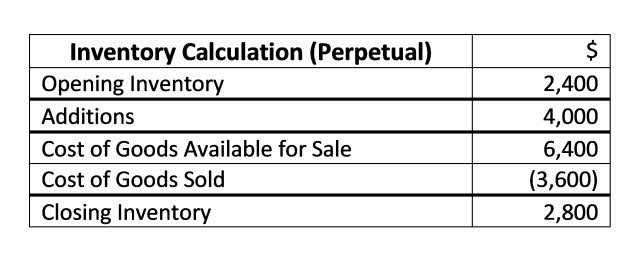Is depreciation expense an administrative expense?
Content

Under the sum-of-the-years digits method, a company recognizes a heavier portion of depreciation expense during the earlier years of an asset’s life. In theory, more expense should be expensed during this time because newer assets are more efficient and more in use than older assets. Unlike intangible assets, tangible assets might have some value when the business no longer has a use for them. For this reason, depreciation is calculated by subtracting the asset’s salvage value or resale value from its original cost. The difference is depreciated evenly over the years of the expected life of the asset. In other words, the depreciated amount expensed in each year is a tax deduction for the company until the useful life of the asset has expired.
Multiply your property’s unadjusted basis each year by the percentage for 7-year property given in Table A-1. You figure your depreciation deduction using the MACRS Worksheet as follows. To figure your depreciation deduction under MACRS, you first determine the depreciation system, property class, placed in service date, basis amount, recovery period, convention, and depreciation method that apply to your property.
Amortization vs. Depreciation: An Overview
For this purpose, participations and residuals are defined as costs, which by contract vary with the amount of income earned in connection with the property. For information about qualified business use of listed property, see What Is the Business-Use Requirement? Of the different options mentioned above, a company often has the option of accelerating depreciation. This means more depreciation expense is recognized earlier in an asset’s useful life as that asset may be used heavier when it is newest. Tangible assets can often use the modified accelerated cost recovery system (MACRS). Meanwhile, amortization often does not use this practice, and the same amount of expense is recognized whether the intangible asset is older or newer.
- For certain specified plants bearing fruits and nuts planted or grafted after December 31, 2022, and before January 1, 2024, you can elect to claim an 80% special depreciation allowance.
- This also allows for measuring cash flows generated from the asset in relation to the value of the asset itself.
- Go to IRS.gov/Account to securely access information about your federal tax account.
- This means you bear the burden of exhaustion of the capital investment in the property.
- By definition, depreciation is only applicable to physical, tangible assets subject to having their costs allocated over their useful lives.
In addition, this gain above the depreciated value would be recognized as ordinary income by the tax office. If the sales price is ever less than the book value, the resulting capital loss is tax-deductible. If the sale price were ever more than the original book value, then the gain above the original book value is recognized as a capital gain. Subsequent years’ expenses will change based on the changing current book value. For example, in the second year, current book value would be $50,000 – $10,000, or $40,000. Thus, depreciation expense would decline to $8,000 ($40,000 x .20).
Topic No. 704, Depreciation
The DB method provides a larger deduction, so you deduct the $192 figured under the 200% DB method. The DB method provides a larger deduction, so you deduct the $320 figured under the 200% DB method. The DB method provides a larger deduction, so you deduct the $200 figured under the 200% DB method. If depreciation expense definition you begin to rent a home that was your personal home before 1987, you depreciate it as residential rental property over 27.5 years. Recapture of allowance deducted for qualified GO Zone property. For additional credits and deductions that affect basis, see section 1016 of the Internal Revenue Code.
- If you placed your property in service before 2021 and are required to file Form 4562, report depreciation using either GDS or ADS on line 17 in Part III.
- Treat the leasing of any aircraft by a 5% owner or related person, or the compensatory use of any aircraft, as a qualified business use if at least 25% of the total use of the aircraft during the year is for a qualified business use.
- That’s because assets provide a benefit to the company over a lengthy period of time.
- Depreciation expense is the systematic allocation of a depreciable asset’s cost to the accounting periods in which the asset is being used.
- The formula for this is (cost of asset minus salvage value) divided by useful life.
- You figure this by subtracting your $1,055,000 section 179 deduction for the machinery from the $1,080,000 cost of the machinery.
The midpoint of each quarter is either the first day or the midpoint of a month. Treat property as placed in service or disposed of on this midpoint. Tara Corporation, a calendar year taxpayer, was incorporated on March 15. For purposes of the half-year convention, it has a short tax year of 10 months, ending on December 31, 2022. During the short tax year, Tara placed property in service for which it uses the half-year convention. Tara treats this property as placed in service on the first day of the sixth month of the short tax year, or August 1, 2022.
Depreciation Expense vs. Accumulated Depreciation: an Overview
If the asset is used for production, the expense is listed in the operating expenses area of the income statement. This amount reflects a portion of the acquisition cost of the asset for production purposes. Depreciation expense is referred to as a noncash expense because the recurring, monthly depreciation entry (a debit to Depreciation Expense and a credit to Accumulated Depreciation) does not involve a cash payment. As a result, a statement of cash flows prepared under the indirect method will add back the depreciation expense that had been deducted on the income statement. Depreciation expense is the appropriate portion of a company’s fixed asset’s cost that is being used up during the accounting period shown in the heading of the company’s income statement. Businesses have some control over how they depreciate their assets over time.
- The annual depreciation using the straight-line method is calculated by dividing the depreciable amount by the total number of years.
- The recipient of the property (the person to whom it is transferred) must include your (the transferor’s) adjusted basis in the property in a GAA.
- Other basis usually refers to basis that is determined by the way you received the property.
- You placed the machine in service in January, the furniture in September, and the computer in October.
- The accounting for depreciation expense also reflects the two areas it impacts.
- Its maximum section 179 deduction is $1,030,000 ($1,080,000 − $50,000), and it elects to expense that amount.
- This accumulation expense reduces the book value of property, plant, and equipment at the end of the charging period.
Start by combining all the digits of the expected life of the asset. For example, an asset with a useful life of five years would have a reciprocal value of 1/5, or 20%. Double the rate, or 40%, is applied to the asset’s current book value for depreciation. Although the rate remains constant, the dollar value will decrease over time because the rate is multiplied by a smaller depreciable base for each period. Different companies may set their own threshold amounts for when to begin depreciating a fixed asset or property, plant, and equipment (PP&E).
Fixed Assets (IAS : Definition, Recognition, Measurement, Depreciation, and Disclosure
Each partner adds the amount allocated from partnerships (shown on Schedule K-1 (Form 1065), Partner’s Share of Income, Deductions, Credits, etc.) to their nonpartnership section 179 costs and then applies the dollar limit to this total. To determine any reduction in the dollar limit for costs over $2,700,000, the partner does not include any of the cost of section 179 property placed in service by the partnership. After the dollar limit (reduced for any nonpartnership section 179 costs over $2,700,000) is applied, any remaining cost of the https://www.bookstime.com/articles/audit-risk-model partnership and nonpartnership section 179 property is subject to the business income limit. Of all methods of calculating depreciation expense, the Straight-line method is the simplest. This is because it simply divides the value of the asset’s depreciable base (the asset’s total cost less its salvage value) by the estimated amount of time the asset will be useful to the company (its useful life). Depletion expense is commonly used by miners, loggers, oil and gas drillers, and other companies engaged in natural resource extraction.
You must make the election on a timely filed return (including extensions) for the year of replacement. The election must be made separately by each person acquiring replacement property. In the case of a partnership, S corporation, or consolidated group, the election is made by the partnership, by the S corporation, or by the common parent of a consolidated group, respectively.
For this reason, depreciation expense refers only to physical depreciation of tangible assets and equipment. Depreciation calculations require a lot of record-keeping if done for each asset a business owns, especially if assets are added to after they are acquired, or partially disposed of. However, many tax systems permit all assets of a similar type acquired in the same year to be combined in a « pool ».
- In general, figure taxable income for this purpose by totaling the net income and losses from all trades and businesses you actively conducted during the year.
- The allocated depreciation will be included in the inventory cost of the goods manufactured until the goods are sold.
- During December, it placed property in service for which it must use the mid-quarter convention.
- You can figure it using a percentage table provided by the IRS, or you can figure it yourself without using the table.
- Additionally, when using the unit-of-production method, it will be necessary to estimate how many units can be produced during the assets useful life.
- If you use part of your home as an office, you may be able to deduct depreciation on that part based on its business use.
If you deduct only part of the cost of qualifying property as a section 179 deduction, you can generally depreciate the cost you do not deduct. May Oak bought and placed in service an item of section 179 property costing $11,000. May used the property 80% for business and 20% for personal purposes.
